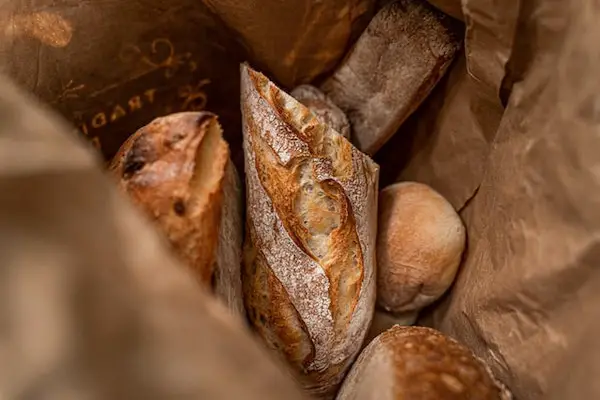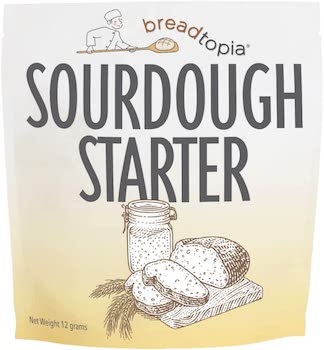If you want to bake homemade bread like a pro, you’ll want to know about the different types of bread out there, how they look, and what guidelines to follow that will lead to the best quality, flavor and texture.

Once you get a good idea of what to look out for, you can join the hundreds of families who have made their own homemade bread for many generations. Here’s your chance to finally whip out your own recipe.
Industrial versus Homemade
First, let’s talk about the difference between bread that is homemade vs made on a commercial level.

Commercialized bread is made to have uniform substance and texture, to be produced on a massive scale and to have just enough shelf-life for you to keep coming back to the store for more. #sneaky
And when it comes to the quality of commercial milled grains, it’s generally lower and usually lacks the essential nutrients.
Read More: Does freshly milled grains REALLY make a difference?
Commercially-made bread or flours may even contain preservatives to help boost shelf life, in an effort to reduce manufacturing costs.
Some not-so-good ingredients you might find include high fructose corn syrup, calcium dioxide, datem, ethoxylated mono and diglycerides, dicalcium phosphate, sodium stearoyl lactylate, calcium propionate, soy lecithin, ammonium chloride and ammonium sulfate.
Basically, the main gist of commercialized bread is to be produced as cheaply as possible to earn the highest profit.
Good for business, but not so good for our tummies.
THe Benefits of Being Homemade
As opposed to commercially-made bread, homemade bread has the advantage of having high quality ingredients, better flavor, taste and texture and longer shelf life.
Plus, you know exactly what goes into your bread because you see all the ingredients put into the mix, ultimately creating the best-tasting bread ever.
Now, as you might know, depending on the type of flour you use, you can get different types of bread.

For example: whole wheat bread will need different ratios of flour as opposed to bread made with rye flour or white flour. Whole wheat bread generally will need one-half cup less flour compared to white flour.
Another cool advantage of making bread at home is being able to experiment with different ingredients.
When making Italian bread, substitute salt with garlic salt. Add the Italian seasonings like rosemary and oregano before you begin to stir. Double the recipe to make two loaves of bread instead. You get to save more time and effort too.
Shopping for Ingredients
When shopping for ingredients for your homemade bread, you can get good quality from your local grocery store or even online.
Online marketplaces like Amazon have great variety of ingredients to choose from, even brand-names like Bob’s Red Mill grains (which are amazing for milling your own flour) and Breadtopia (just to name a few).
Plus, you can even buy LIVE sour-dough starters and use it immediately upon arrival.
Read more: How does Sourdough and Leavening Work?
We love sourdough starters, and this starter pack from Breadtopia is our personal favorite. Plus it’s got lots of raving fans who LOVE using this for their bread making.
Feel free to add condiments and other sweeteners to make special kinds of homemade bread. It will also require some more techniques to get the right crust and make toast bread.
Depending on the kind of bread you want, you will have to employ different techniques and tools. Homemade bread is convenient, easy and cheap, so enjoy the experience and learn every step of the way.


